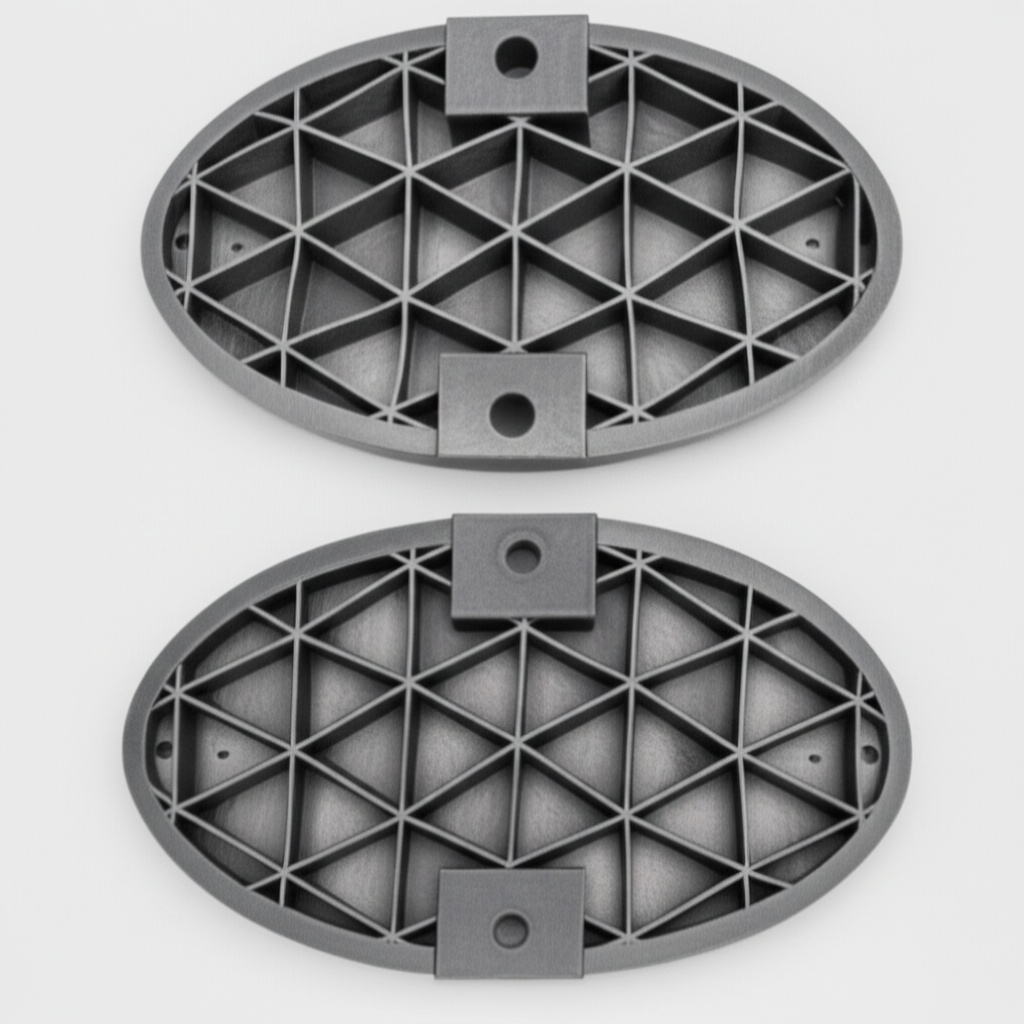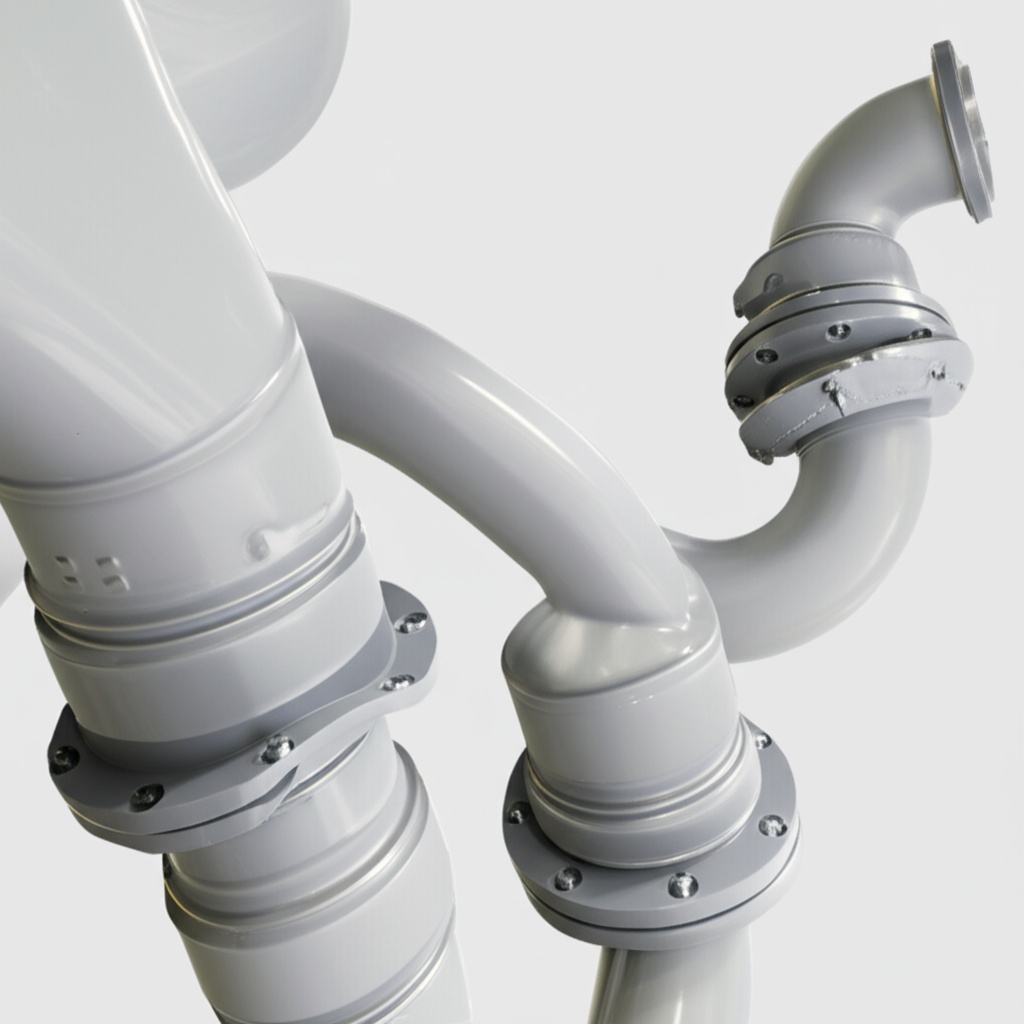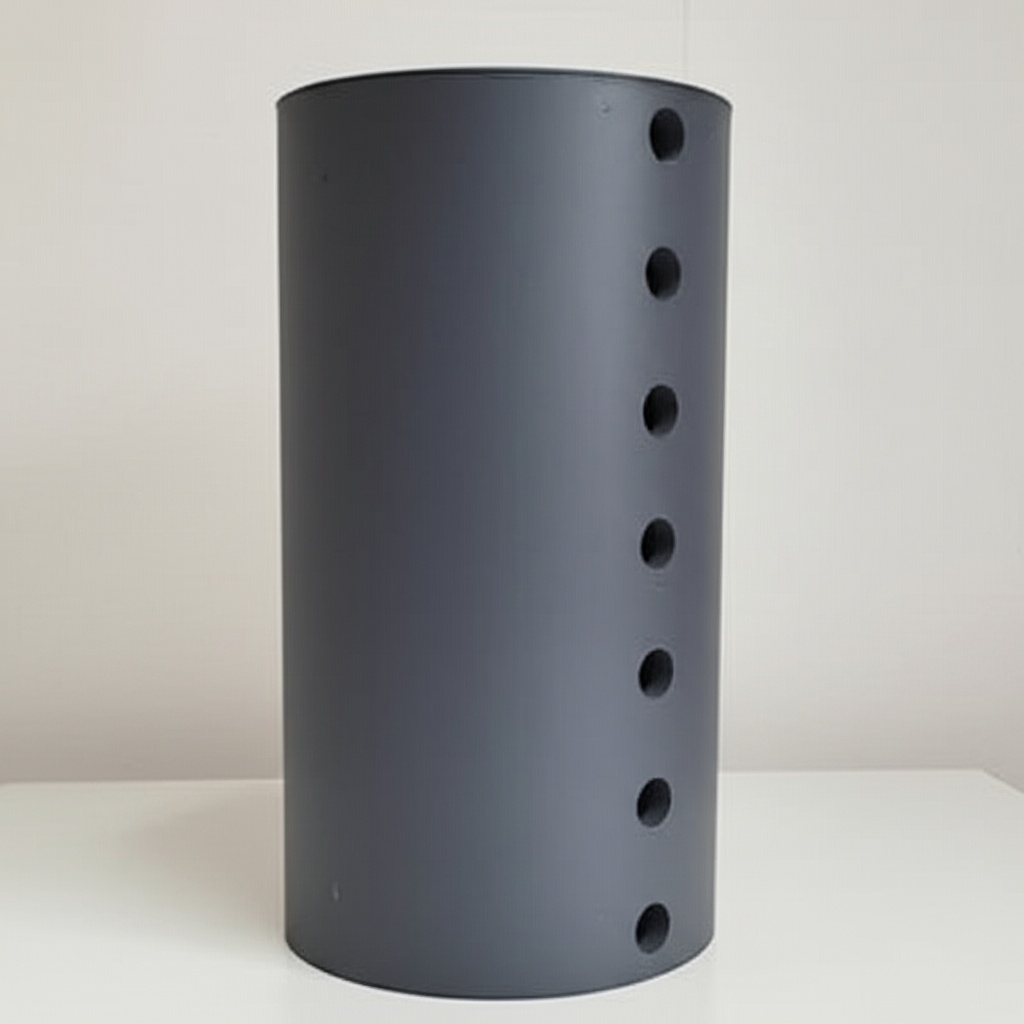Your Global SiC Supplier Network Access Point

Share
Your Global SiC Supplier Network Access Point
In the relentless pursuit of performance, efficiency, and durability across demanding industrial landscapes, materials innovation stands paramount. Among the elite class of advanced ceramics, silicon carbide (SiC) emerges as a true engineering marvel. Renowned for its exceptional properties, custom silicon carbide products are not just components; they are foundational elements enabling breakthroughs in some of the world’s most critical sectors. This blog post delves into the indispensable role of SiC and how a robust global SiC supplier network is key to unlocking its full potential for engineers, procurement managers, and technical buyers.
What Are Custom Silicon Carbide Products and Why Are They Essential?
Custom silicon carbide products are high-performance ceramic components tailored to specific application requirements. Unlike off-the-shelf solutions, custom SiC parts are designed and manufactured to precise specifications, ensuring optimal performance, fit, and longevity in the most challenging environments. Their essentiality stems from a unique combination of properties:
- Exceptional Hardness and Wear Resistance: Surpassing many metals and ceramics, SiC offers unparalleled resistance to abrasion and erosion, extending component lifespan significantly.
- High Thermal Conductivity: Crucial for thermal management, SiC efficiently dissipates heat, preventing overheating and ensuring stable operation in high-power and high-temperature systems.
- Excellent Thermal Shock Resistance: The ability to withstand rapid temperature changes without fracturing makes SiC ideal for thermal cycling applications.
- Superior Corrosion Resistance: SiC exhibits remarkable inertness to a wide range of corrosive chemicals, acids, and alkalis, making it invaluable in harsh chemical processing environments.
- High Temperature Stability: SiC maintains its mechanical strength and structural integrity at temperatures exceeding 1,500°C, far beyond the limits of most engineering materials.
- High Electrical Breakdown Strength: This property is critical in power electronics, allowing SiC devices to operate at higher voltages and frequencies with lower energy losses.
- Low Thermal Expansion: Minimizes dimensional changes with temperature fluctuations, ensuring precision and stability in critical assemblies.
Main Applications Across Industries
The versatility of silicon carbide fuels its widespread adoption across a diverse range of industries. Each sector leverages SiC’s unique attributes to enhance performance, improve efficiency, and reduce operational costs.
| Industry | Key SiC Applications | Benefit of SiC | |||
|---|---|---|---|---|---|
| Semiconductor Manufacturing | Wafer carriers, furnace components, process jigs, electrostatic chucks, susceptors, nozzles | High purity, thermal stability, excellent thermal conductivity for uniform heating, wear resistance for precise handling. | |||
| Automotive & Electric Vehicles (EVs) | Power modules (inverters, converters), on-board chargers, motor controllers, braking systems, pump seals | Higher power density, increased efficiency, reduced weight, extended range, high wear resistance. | |||
| Aerospace & Defense | Lightweight mirror substrates, optical components, thermal management systems, missile radomes, rocket nozzles, protective armor | Lightweight, high stiffness, thermal stability, resistance to extreme temperatures and harsh environments. | |||
| Power Electronics | Diodes, MOSFETs, IGBTs for power supplies, grid infrastructure, industrial motor drives | Higher switching frequencies, lower power losses, higher operating temperatures, smaller footprint. | |||
| Renewable Energy | Solar inverters, wind turbine converters, energy storage systems | Improved efficiency, reliability, and power density in demanding power conversion applications. | |||
| Metallurgy & High-Temperature Processing | Furnace lining, crucibles, kiln furniture, heat exchangers, thermocouple protection tubes | Excellent thermal shock resistance, high temperature strength, oxidation resistance, chemical inertness. | |||
| Chemical Processing | Pump components, seals, valve seats, heat exchangers, nozzles for corrosive media | Superior corrosion and erosion resistance, enabling operation with aggressive chemicals. | |||
| Industrial Machinery & Equipment | Mechanical seals, bearings, nozzles, cutting tools, wear plates, grinding media | Extreme hardness and wear resistance for extended service life and reduced maintenance. | |||
| Medical Devices | Implants, surgical instruments (specialized applications) | Biocompatibility (in specific forms), hardness, and wear resistance for demanding applications. | |||
| Oil & Gas | Pump seals, valve components, downhole tools, wear parts in abrasive environments | Exceptional wear and corrosion resistance against harsh fluids and solids. | Nuclear Energy | Fuel cladding, structural components, high-temperature gas-cooled reactor components | Neutron transparency, high temperature stability, radiation resistance. |
Why Choose Custom Silicon Carbide?
While standard ceramic components offer a baseline, custom silicon carbide truly shines when applications demand precise performance. The benefits of customization include:
- Optimized Performance: Components are designed to exact specifications, ensuring perfect fit and maximum efficiency for specific operational parameters (e.g., thermal resistance, wear resistance, chemical inertness).
- Extended Lifespan: Tailored designs and material selection can significantly prolong the service life of components, reducing replacement costs and downtime.
- Reduced System Footprint: SiC’s superior properties often allow for smaller, lighter designs, which is critical in space-constrained applications.
- Problem Solving: Custom SiC solutions can address unique challenges related to extreme temperatures, corrosive environments, high wear, or specific electrical requirements that other materials cannot meet.
- Cost-Effectiveness: While the initial investment might be higher than traditional materials, the long-term savings from enhanced durability, efficiency, and reduced maintenance often make custom SiC a more economical choice.
Recommended SiC Grades and Compositions
The performance of SiC components is heavily dependent on the specific grade and composition. Each type offers a unique balance of properties, making it suitable for different applications.
- Reaction-Bonded Silicon Carbide (SiSiC):
- Properties: Excellent thermal conductivity, good thermal shock resistance, high strength, superior creep resistance. Contains free silicon.
- Applications: Kiln furniture, furnace components, heat exchangers, mechanical seals, wear parts, pump components.
- Sintered Alpha Silicon Carbide (SSiC):
- Properties: Very high purity, extremely hard, excellent corrosion and wear resistance, high strength at elevated temperatures. No free silicon.
- Applications: Mechanical seals, bearings, nozzles, semiconductor equipment parts, ballistic armor, high-performance pump components.
- Nitride-Bonded Silicon Carbide (NBSiC):
- Properties: Good strength, thermal shock resistance, and corrosion resistance. Often used in large, complex shapes.
- Applications: Refractory components, kiln furniture, burner nozzles.
- Recrystallized Silicon Carbide (ReSiC):
- Properties: High purity, good thermal shock resistance, and chemical stability. Relatively porous.
- Applications: Kiln furniture, high-temperature components where porosity is acceptable.
Design Considerations for SiC Products
Designing with silicon carbide requires a specialized understanding of its unique characteristics. Proper design ensures manufacturability, optimal performance, and long-term reliability.
- Geometry Limits: SiC is a hard, brittle material. Avoid sharp internal corners, abrupt thickness changes, and complex geometries that are difficult to machine. Smooth transitions and generous radii are preferred.
- Wall Thickness: Aim for uniform wall thickness where possible to minimize internal stresses during cooling and firing. Excessive thickness variations can lead to warping or cracking.
- Stress Points: Identify potential stress concentration points (e.g., holes, sharp edges) and design to distribute stress evenly. Chamfers and fillets are crucial.
- Tolerances: While precision is achievable, excessively tight tolerances can significantly increase manufacturing costs and lead times. Design to the loosest acceptable tolerance.
- Joining and Assembly: Consider how the SiC component will integrate with other parts. Brazing, adhesive bonding, or mechanical fastening methods require specific design features.
- Weight Reduction: SiC’s high strength-to-weight ratio allows for lighter designs. Consider internal latticework or hollow sections where structural integrity permits.
Tolerance, Surface Finish & Dimensional Accuracy
Achieving precise dimensions and surface finishes in silicon carbide manufacturing is a testament to advanced ceramic engineering capabilities.
- Achievable Tolerances: Standard tolerances for SiC components often range from $pm 0.05 text{ mm}$ to $pm 0.2 text{ mm}$ depending on size and complexity. For ground and lapped surfaces, much tighter tolerances, down to $pm 0.005 text{ mm}$, are possible for critical dimensions.
- Surface Finish Options:
- As-fired: Rougher finish, typically $text{Ra } 3.2-6.3 text{ µm}$. Suitable for non-critical surfaces.
- Ground: Achieves a smoother finish, typically $text{Ra } 0.8-1.6 text{ µm}$, improving flatness and dimensional accuracy.
- Lapped/Polished: Provides the finest surface finish, down to $text{Ra } 0.1-0.4 text{ µm}$ or even finer for optical or sealing applications, crucial for mechanical seals and semiconductor components.
- Dimensional Accuracy: High precision grinding and lapping techniques are employed to achieve exceptional dimensional accuracy, flatness, and parallelism, vital for mating surfaces and high-performance assemblies.
Post-Processing Needs
While SiC is inherently robust, post-processing steps can further enhance its performance, durability, and suitability for specific applications.
- Grinding: Essential for achieving tight tolerances, flat surfaces, and precise geometries. Diamond grinding wheels are typically used due to SiC’s hardness.
- Lapping & Polishing: Creates ultra-smooth surfaces, critical for mechanical seals, bearings, and optical components, reducing friction and wear.
- Sealing/Impregnation: For porous SiC grades, impregnation with resins or metals can improve impermeability and mechanical properties, making them suitable for vacuum or fluid handling.
- Coating: Applying specialized coatings (e.g., CVD SiC, pyrolytic carbon) can enhance surface properties such as wear resistance, corrosion resistance, or modify electrical conductivity for specific applications like susceptors.
- Joining: Techniques like brazing or adhesive bonding are used to create complex assemblies from multiple SiC components or to join SiC to other materials.
Common Challenges and How to Overcome Them
Working with silicon carbide presents unique challenges, primarily due to its extreme hardness and brittleness. However, experienced manufacturers have developed sophisticated methods to mitigate these issues.
- Brittleness: SiC is susceptible to chipping or cracking under impact or tensile stress.
- Mitigation: Careful design with radii, chamfers, and avoidance of sharp corners. Precise handling during manufacturing and assembly.
- Machining Complexity: Its extreme hardness makes traditional machining difficult and costly.
- Mitigation: Use of diamond grinding and lapping, advanced CNC machining, and specialized ceramic processing techniques. Near-net-shape forming methods like slip casting or pressing minimize post-sintering machining.
- Thermal Shock (in certain scenarios): While generally good, extreme rapid heating/cooling can still pose a challenge for very large or complex parts.
- Mitigation: Gradual heating/cooling cycles in application, optimized component design to manage thermal gradients.
- Cost: The specialized manufacturing processes and raw materials can lead to higher initial costs compared to metals or commodity ceramics.
- Mitigation: Focus on the total cost of ownership (TCO) – the extended lifespan, reduced downtime, and improved performance often yield significant long-term savings. Optimized design to reduce material usage.
More Reliable Quality and Supply Assurance Within China
As you are aware, the hub of China’s silicon carbide customizable parts manufacturing is situated in Weifang City of China. Now the region has been home to over 40 silicon carbide production enterprises of various sizes, collectively accounting for more than 80% of the nation’s total silicon carbide output.
We, Sicarb Tech, have been introducing and implementing silicon carbide production technology since 2015, assisting the local enterprises in achieving large-scale production and technological advancements in product processes. We have been a witness to the emergence and ongoing development of the local silicon carbide industry.
Based on the platform of the national technology transfer center of the Chinese Academy of Sciences, Sicarb Tech is an entrepreneurial park that collaborates closely with the National Technology Transfer Center of the Chinese Academy of Sciences. It serves as a national-level innovation and entrepreneurship service platform, integrating innovation, entrepreneurship, technology transfer, venture capital, incubation, acceleration, and scientific and technological services. This strong backing ensures a commitment to cutting-edge research and development.
Sicarb Tech capitalizes on the robust scientific, technological capabilities and talent pool of the Chinese Academy of Sciences . Backed by the Chinese Academy of Sciences National Technology Transfer Center, it serves as a bridge, facilitating the integration and collaboration of crucial elements in the transfer and commercialization of scientific and technological achievements. Moreover, it has established a comprehensive service ecosystem that spans the entire spectrum of the technology transfer and transformation process.
Sicarb Tech possess a domestic top-tier professional team specializing in customized production of silicon carbide products. Under our support, 412+ local enterprises have benefited from our technologies. We possess a wide array of technologies, such as material, process, design, measurement & evaluation technologies, along with the integrated process from materials to products. This enables us to meet diverse customization needs. We can offer you higher-quality, cost-competitive customized silicon carbide components in China.
We are also committed to assisting you in establishing a specialized factory. If you need to build a professional silicon carbide products manufacturing plant in your country, Sicarb Tech can provide you with the technology transfer for professional silicon carbide production, along with a full-range of services (turnkey project) including factory design, procurement of specialized equipment, installation and commissioning, and trial production. This enables you to own a professional silicon carbide products manufacturing plant while ensuring a more effective investment, reliable technology transformation, and guaranteed input-output ratio. For more information on how we can support your silicon carbide needs, please contact us today.
How to Choose the Right SiC Supplier
Selecting a reliable silicon carbide supplier is paramount to the success of your project. Look for partners who demonstrate technical expertise, quality assurance, and a commitment to customer service.
- Technical Capabilities & Expertise: Assess their experience in manufacturing custom SiC components for your specific industry. Do they offer design assistance and material selection guidance?
- Material Options: Ensure they offer the specific SiC grades (e.g., SSiC, SiSiC) suitable for your application and can provide detailed material properties.
- Quality Control & Certifications: Verify their quality management systems (e.g., ISO 9001). Request material certifications and inspection reports.
- Manufacturing Capabilities: Can they handle the required part complexity, tolerances, and surface finishes? Do they have advanced machining and post-processing capabilities?
- Production Capacity & Lead Time: Can they meet your volume requirements and deliver within your project timelines?
- Customer Support & Communication: A responsive and knowledgeable team is crucial for successful collaboration.
- Track Record & References: Look for testimonials or case studies demonstrating their success with similar projects.
Cost Drivers and Lead Time Considerations
Understanding the factors influencing cost and lead time is essential for effective project planning and budget management when procuring custom silicon carbide components.
Cost Drivers:
- Material Grade: Sintered SiC (SSiC) is generally more expensive than Reaction-Bonded SiC (SiSiC) due to higher purity and more complex processing.
- Part Complexity & Geometry: Intricate designs, thin walls, and tight radii increase machining difficulty and thus cost.
- Tolerances & Surface Finish: Tighter tolerances and finer surface finishes (e.g., lapping, polishing) require more sophisticated and time-consuming post-processing, significantly impacting cost.
- Volume: Higher production volumes typically lead to lower per-unit costs due to economies of scale.
- Tooling & NRE (Non-Recurring Engineering): Custom tooling for pressing or casting, along with initial design and engineering efforts, contribute to upfront costs, especially for low-volume or prototype orders.
- Inspection Requirements: Stringent inspection protocols and specialized testing can add to the overall cost.
Lead Time Considerations:
- Material Availability: Specialized SiC powders may have longer lead times.
- Manufacturing Process: The SiC manufacturing process (forming, sintering, machining) is multi-stage and can be lengthy. Sintering cycles alone can take days.
- Part Complexity: Complex geometries requiring extensive machining or multiple post-processing steps will naturally extend lead times.
- Order Volume: Larger orders require more production time.
- Supplier Backlog: The supplier’s current production schedule and order queue can impact delivery dates.
- Quality Control & Testing: Comprehensive quality checks and any required certifications add to the overall timeline.
Frequently Asked Questions (FAQ)
Here are some common questions we receive regarding custom silicon carbide products:
Q1: Is silicon carbide electrically conductive?
A: The electrical properties of silicon carbide vary depending on its purity and doping. High-purity, undoped SiC is an electrical insulator, making it excellent for high-voltage and high-frequency power electronics applications. However, by introducing specific dopants, SiC can be made semi-conductive, which is fundamental to its use in advanced semiconductor devices.
Q2: Can silicon carbide be repaired?
A: Due to its extreme hardness and chemical inertness, traditional repair methods for SiC components are challenging. Small chips or cracks might sometimes be addressed through specialized grinding or adhesive bonding, but for critical applications, replacement is often the most reliable solution. Preventative measures and robust design are key.
Q3: What is the maximum operating temperature for SiC?
A: Silicon carbide can maintain its strength and integrity at extremely high temperatures. Different grades have varying limits, but typically, SiC can operate continuously in air up to 1,500°C – 1,600°C. In inert atmospheres, some grades can perform even higher, reaching up to 2,000°C or more, making it suitable for even the most extreme thermal environments.
Q4: How does SiC compare to alumina ceramics?
A: While both are advanced ceramics, SiC generally outperforms alumina in several key areas. SiC has significantly higher hardness, better thermal conductivity, superior thermal shock resistance, and greater strength at very high temperatures. Alumina is typically more cost-effective and easier to machine, making it suitable for less demanding applications where SiC’s extreme properties aren’t strictly necessary.
Q5: Is custom SiC worth the investment?
A: For applications demanding extreme wear resistance, high-temperature stability, superior corrosion resistance, or high electrical efficiency, custom SiC is almost always worth the investment. The longer lifespan, reduced downtime, and enhanced performance often lead to a lower total cost of ownership compared to less capable materials that require frequent replacement or cause system inefficiencies.
Conclusion
Custom silicon carbide products are indispensable for industries pushing the boundaries of performance and durability. From the microscopic precision required in semiconductor manufacturing to the extreme thermal demands of aerospace and power electronics, SiC offers solutions where conventional materials fail. Choosing the right SiC supplier is a critical decision that impacts not only the quality of the components but also the success of your entire project. By understanding the unique properties of SiC, meticulous design considerations, and working with a knowledgeable and reputable supplier like Sicarb Tech, companies can harness the full potential of this remarkable material. Partnering with a global SiC supplier that combines technical expertise with a robust manufacturing network, ensures access to cutting-edge solutions and reliable supply for your most demanding industrial applications. Invest in custom SiC, and invest in the future of your engineering success.

About the Author: Sicarb Tech
We provide clear and reliable insights into silicon carbide materials, component manufacturing, application technologies, and global market trends. Our content reflects industry expertise, practical experience, and a commitment to helping readers understand the evolving SiC landscape.




